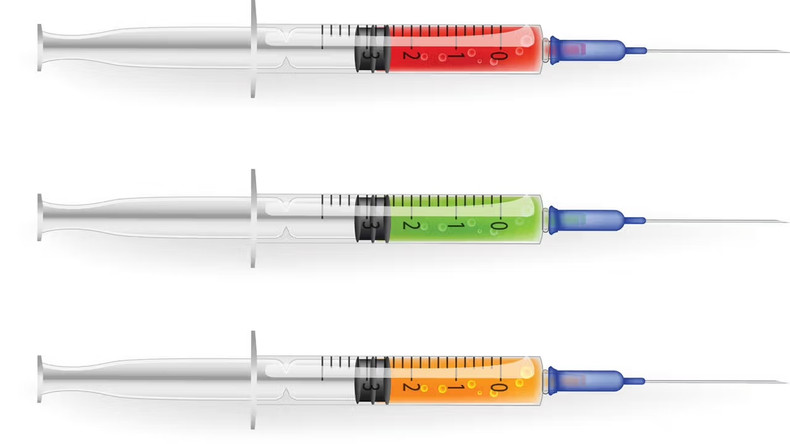Syringes are indispensable tools in modern medicine, playing a crucial role in everything from routine vaccinations to life-saving treatments. While they may seem simple, syringes have undergone significant technological advancements over the years, improving safety, precision, and patient comfort. In this blog post, we explore the latest innovations in syringe technology and their impact on healthcare practices worldwide.
1. The Evolution of Safety Syringes: Protecting Patients and Healthcare Workers
Needlestick injuries pose a significant risk to healthcare workers, potentially exposing them to bloodborne pathogens such as HIV and hepatitis. To address this, safety syringes have been developed with built-in features to prevent accidental needle sticks.
- Retractable Needles: One of the most effective innovations is the retractable needle, which automatically retracts into the barrel after use. This design significantly reduces the risk of accidental exposure.
- Needle Guards and Shields: Some safety syringes are equipped with a protective shield that covers the needle after injection, preventing injuries during disposal.
- Auto-Disable Mechanisms: These syringes lock or disable themselves after a single use, preventing reuse and the spread of infections, especially in regions with limited access to sterilized medical supplies.
2. Needle-Free Injection Systems: A Painless Alternative
For those with needle phobia or for situations where traditional injections are impractical, needle-free injection systems offer a revolutionary solution.
- Jet Injectors: These devices use a high-pressure stream to deliver medication through the skin without the need for a needle. They are commonly used for administering vaccines and hormone therapies.
- Microneedle Patches: These patches contain tiny needles that barely penetrate the skin, delivering medication painlessly and effectively. Microneedle patches are currently being explored for vaccine delivery and diabetes management.
- Spring-Loaded Systems: These devices use a spring mechanism to push the medication into the tissue, offering a less painful alternative to traditional needles.
3. Smart Syringes: Enhancing Accuracy and Monitoring
With the advent of digital technology, syringes have become smarter, offering enhanced accuracy and monitoring capabilities.
- Dose Tracking and Digital Monitoring: Some smart syringes are equipped with digital sensors that track the dosage and time of administration. This data can be uploaded to a smartphone app or electronic health record, helping patients and healthcare providers monitor adherence to medication schedules.
- Automated Dose Calculation: Smart syringes with integrated software can calculate the correct dosage based on patient-specific parameters, reducing the risk of human error.
4. Biodegradable and Eco-Friendly Syringes: Reducing Environmental Impact
The global healthcare industry generates a significant amount of medical waste, and disposable syringes are a major contributor. To address this issue, researchers are developing biodegradable and eco-friendly syringes.
- Biodegradable Materials: These syringes are made from materials that break down naturally after use, reducing their impact on landfills and the environment.
- Recyclable Components: Some manufacturers are designing syringes with recyclable components, encouraging proper disposal and recycling practices to minimize waste.
5. Prefilled Syringes: Convenience and Safety Combined
Prefilled syringes have gained popularity in both hospital and home settings due to their convenience and safety.
- Enhanced Sterility: Prefilled syringes come sealed and sterilized, reducing the risk of contamination and infection.
- Ease of Use: They eliminate the need for drawing medication from a vial, making them user-friendly, especially for patients who need to self-administer medication.
- Dose Accuracy: Prefilled syringes provide precise dosing, minimizing the risk of dosage errors and ensuring that patients receive the correct amount of medication.
6. The Future of Syringe Technology: What’s Next?
The future of syringe technology is promising, with ongoing research and development focused on making injections safer, more efficient, and more comfortable.
- Nanotechnology: Researchers are exploring the use of nanotechnology to develop needles that can deliver medication at a cellular level, potentially transforming the treatment of conditions like cancer and autoimmune diseases.
- Self-Injection Devices: Innovations in self-injection devices are making it easier for patients to administer medications at home, reducing the need for frequent hospital visits.
- Syringe Robots: In clinical settings, robotic systems are being developed to assist with precise injections, especially for delicate procedures such as eye injections.
Syringes have come a long way from their humble beginnings, evolving into sophisticated tools that enhance safety, precision, and patient comfort. These innovations are transforming healthcare practices, making treatments more effective and accessible. As technology continues to advance, the humble syringe will remain at the forefront of medical innovation, improving health outcomes for people around the world.

